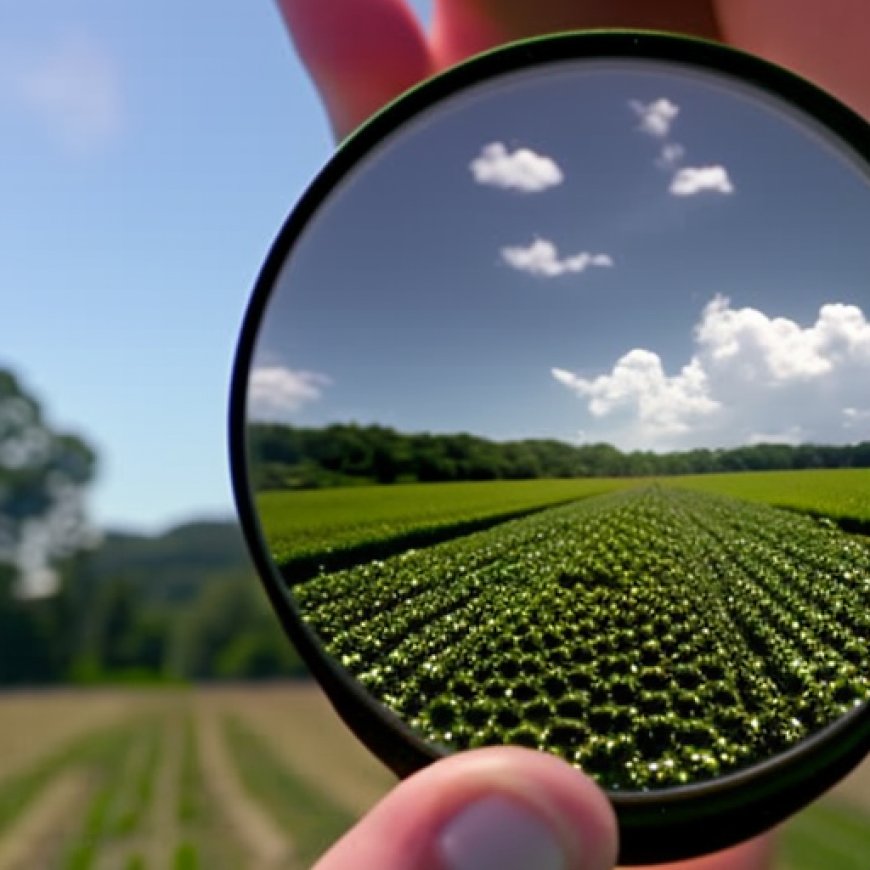Hype or Hope? Regenerative Agriculture Under the Magnifying Glass – Seed World
Hype or Hope? Regenerative Agriculture Under the Magnifying Glass Seed World


Regenerative Agriculture: A Path to Sustainable Development
Introduction
Regenerative agriculture is an approach that focuses on maintaining agricultural productivity, increasing biodiversity, and enhancing ecosystem services such as carbon capture and storage. It aligns with the Sustainable Development Goals (SDGs) by promoting responsible consumption and production (Goal 12), climate action (Goal 13), and life on land (Goal 15).
The European Green Deal and Regenerative Agriculture
The European Green Deal’s Farm to Fork and Biodiversity Strategies aim to reduce greenhouse gas emissions by 55% by 2030. Regenerative agriculture is a key strategy in achieving this goal and setting a global standard for sustainable food production.
Research Efforts in the UK
The National Institute of Agricultural Botany (NIAB) is leading research efforts to scale up regenerative agriculture commercially. This includes soil science, variety testing, rotational agronomy, precision agronomy, cover cropping, data science, and water use efficiency.
The Growing Embrace of Regenerative Agriculture
Major food producers, retailers, NGOs, and banks are adopting regenerative agriculture for its environmental benefits, such as improving soil and water quality, enhancing biodiversity, and conserving natural resources.
Challenges and Economic Viability
There are concerns about the economic viability of regenerative agriculture at the farm level and its impact on domestic food production capacity. Trials have shown that certain practices may result in lower crop yields in the short term.
Defining Regenerative Agriculture
Regenerative agriculture lacks a clear definition, which some view as a strength due to its flexibility. It differs from organic agriculture by allowing a broader range of technologies and inputs that align with its guiding principles.
Sustainable Intensification of Food Production
Regenerative agriculture aims to optimize productivity while protecting and improving the land and environment. It is compatible with sustainable intensification and precision agriculture.
NIAB’s Research Efforts
NIAB is preparing for a major research effort to deliver science-backed regenerative agriculture practices. The goal is to develop metrics for benchmarking sustainability and monitoring environmental impact over time.
Integrating Regen Ag into Genetics
NIAB plans to integrate regenerative agriculture objectives into genetics and pre-breeding activities. This includes improving N-fixing pulse crops, exploring novel crop opportunities, and potentially generating revenue from cover crops.
Conclusion
A progressive, science-based approach to regenerative agriculture offers the potential for profitable crop production while reducing environmental impacts. NIAB’s research will be crucial in supporting this approach.
Editor’s Note: This article was adapted from ‘Regenerative agriculture – hype or hope?’ by Professor Mario Caccamo, chief executive of NIAB.
Analysis of the Article in Relation to Sustainable Development Goals (SDGs)
1. Which SDGs are addressed or connected to the issues highlighted in the article?
The article addresses several Sustainable Development Goals (SDGs), including:
- SDG 2: Zero Hunger
- SDG 12: Responsible Consumption and Production
- SDG 13: Climate Action
- SDG 15: Life on Land
2. What specific targets under those SDGs can be identified based on the article’s content?
The article implies the following targets:
- Target 2.4: Sustainable food production systems and resilient agricultural practices.
- Target 12.2: Sustainable management and use of natural resources.
- Target 13.1: Strengthen resilience and adaptive capacity to climate-related hazards and natural disasters.
- Target 15.3: Combat desertification, restore degraded land and soil, including land affected by desertification, drought, and floods.
3. Are there any indicators mentioned or implied in the article that can be used to measure progress towards the identified targets?
The article implies the following indicators:
- Indicator for Target 2.4 could be the adoption of regenerative agriculture practices.
- Indicator for Target 12.2 could be the reduction in synthetic input use.
- Indicator for Target 13.1 could be the increase in carbon capture and storage.
- Indicator for Target 15.3 could be the improvement in soil health and biodiversity.
4. Create a table with three columns titled ‘SDGs, Targets and Indicators” to present the findings from analyzing the article.
| SDGs | Targets | Indicators |
|---|---|---|
| SDG 2: Zero Hunger | Target 2.4: Sustainable food production systems and resilient agricultural practices. | Adoption of regenerative agriculture practices. |
| SDG 12: Responsible Consumption and Production | Target 12.2: Sustainable management and use of natural resources. | Reduction in synthetic input use. |
| SDG 13: Climate Action | Target 13.1: Strengthen resilience and adaptive capacity to climate-related hazards and natural disasters. | Increase in carbon capture and storage. |
| SDG 15: Life on Land | Target 15.3: Combat desertification, restore degraded land and soil, including land affected by desertification, drought, and floods. | Improvement in soil health and biodiversity. |
Copyright: Dive into this article, curated with care by SDG Investors Inc. Our advanced AI technology searches through vast amounts of data to spotlight how we are all moving forward with the Sustainable Development Goals. While we own the rights to this content, we invite you to share it to help spread knowledge and spark action on the SDGs.
Fuente: seedworld.com

Join us, as fellow seekers of change, on a transformative journey at https://sdgtalks.ai/welcome, where you can become a member and actively contribute to shaping a brighter future.







